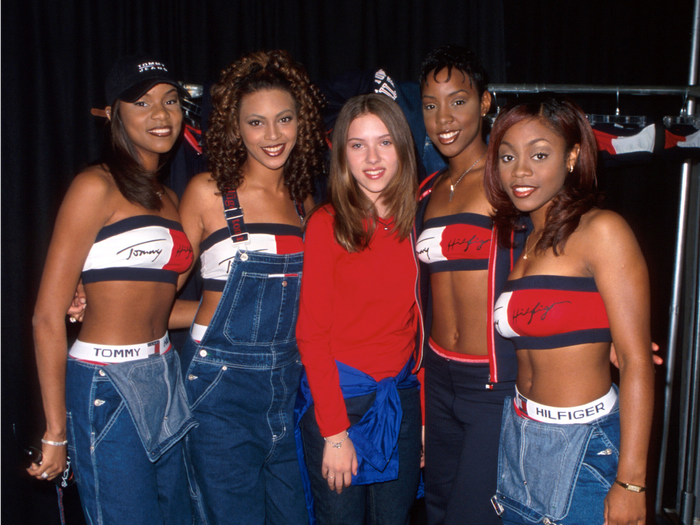The style of clothing in the United States has been shaped by several factors. African slaves and Hawaiians brought their own styles of clothing to the country. Several of the African-American slaves made contributions to clothing in America, including the evolution of jeans. Originally, jeans were a type of hard-working clothing, but in 1853, a man named Levi Strauss brought jeans to the general public. Today, jeans come in a wide variety of styles.
Traditions
The term “tradition” describes a cultural feature that is inherited or preserved. This concept is usually contrasted with the fast-paced fashions of the “Western” world. Early social psychologists focused on understanding the human element of fashion change and how cultures maintain traditional ways of dressing. While these ideas are largely rooted in historical fact, they can also be influenced by other factors. In America, many cultural groups maintain traditions that are still relevant today.
Native Americans adapted their clothing for their specific climate. In the northern part of the continent, the Voyageurs adapted clothing that was warm and protected against the cold. This included moccasins and animal skin garments. Benjamin Franklin famously wore a raccoon cap when he traveled to Europe. Similarly, European clothing quickly adopted and evolved, resulting in the homogenization of American fashions.
The Tsachila group, for example, wear striped garments, including a skirt with white stripes. While men often wear darker colors, women tend to wear brighter colours. Light-colored clothing is a common sight in coastal areas. Women in particular enjoy lightweight dresses and Cuban guayaberas, and men tend to wear lighter clothes. This contrast between dress and climate influences the way that clothing is worn.
Although jeans and t-shirts are common among Americans, many people wear different outfits during certain occasions or festivals. The arid Southwest and Great Basin have different clothing traditions, but they are generally more standardized and incorporate more skin products into their clothing. Some sedentary tribes in the southwest even raised cotton in their areas and traded it north with corn and squashes. In these areas, the Hopi wore cotton mantas, dresses, and sashes.
Styles
American clothing styles are varied and diverse. From casual clothes to formal wear, everyone can find something that fits their lifestyle. There are even different categories, from cowboy to college prep. Here are the styles of clothing that are popular in America:
Fabrics
In the United States, textiles are a major component of apparel. Many garment manufacturers operate under poor conditions and are not required to pay minimum wages. In the United States, the textile industry is a major part of the apparel industry, and many apparel manufacturers work with local textiles. There are many factors that affect the quality of textiles, and some of these factors are beyond the control of consumers. While these issues may be unavoidable, they can be mitigated with the right actions.
Textiles are manufactured in many different strengths and qualities. Some materials are natural, while others are synthetic. While synthetics are considered non-biodegradable, they are widely used in the clothing industry. Polyester and cotton are used in all types of clothing, often blended with other fabrics for strength and durability. Aramid fibre is used for protection against cuts and acrylic fibre is used to imitate wools and cashmere.
Manufacturers
When it comes to fashion, American-made clothes are usually higher quality than those produced by mass-retailers. American clothing manufacturers take better care of their products and their clothing generally lasts longer. Because of this, they tend to be more expensive than their overseas counterparts. Additionally, buying American-made clothing also supports U.S. manufacturing. However, you should keep in mind that buying American-made clothes comes with its own set of disadvantages.
First, clothing manufacturers in the US are often more attentive to customer service. This means fewer headaches for you. They also typically work with you to ensure high-quality production standards. A production manager works with you to coordinate the different steps of production. He or she will troubleshoot any production issues, and help ensure the final product is of the highest quality. Manufacturers in the USA are generally better-equipped to meet the strict standards required by the industry.
As time went by, the fashion industry began to shift away from European and Japanese designs, and the U.S. became more involved in World War II. As a result, American manufacturers became more popular and sought out designers from the United States. Despite the challenges, American manufacturers continued to innovate, and even began to rely more on American designers. By the end of the war, American clothing manufacturers had a more diverse product selection than ever before.
One of the best-known apparel manufacturers in the US is CustomInk. Recently, they were named to Inc. 500 list of fastest-growing private companies and were also named a “Great Place to Work” by Washingtonian magazine. CustomInk utilizes new technologies and their team of artists to create clothing that is unique and personalized. From custom t-shirts to personalized face masks, the company has a wide range of clothing.
Trends
Designer children’s clothing is hot and so is designer pet apparel. The millennial pet parent phenomenon has seen a surge in designer dog apparel. Brands like Versace and Diesel now offer dog apparel lines. The trend started in the late 2000s, but has recently come full circle. Designer pet apparel is an affordable way to give your pet a stylish look. The new trends in American clothing can be a source of inspiration for you.
In the late ’70s, disco music was all the rage, with disco clothes being worn by many. Movies like Saturday Night Fever also contributed to the music-inspired fashion trend. In 1980, women wore a combination of fitted and loose garments, pairing chunky jewelry with their outfits. During this time, women were also sporting puffy-shouldered blouses and dresses. In the early ’80s, lace accessories and two-tone outfits were popular.
During the past few seasons, many elements of clothing design have changed. Colors like vibrant green, soft pink, sunny orange, and fresh blue are popular choices. In the early 1990s, feather elements were popular only in high schools, but became grounded over the past two years. The trend is now a bit more sophisticated, with the aim of encouraging people to be more active. During the next few years, the trend will continue to shift.
Celebrities are also key in creating trends. They have a strong influence on the public and often follow their every move. Their influence is so strong, that major companies often turn to them as their spokespeople. By wearing provocative outfits, celebrities can become the face of an entire industry. It is no wonder that so many celebrities are involved in fashion. It is a great way to attract the attention of a wide audience.

